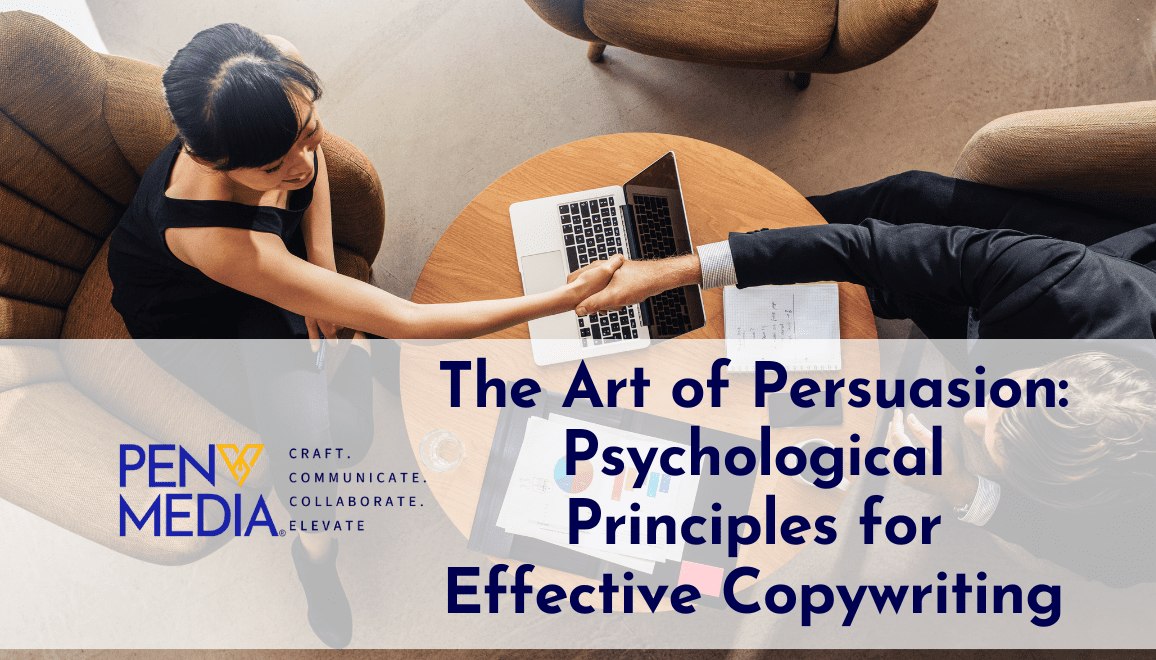Understanding Persuasion Psychology
Persuasion psychology explores how individuals are influenced by various factors when making decisions. By understanding these principles, you can craft persuasive copy that resonates with your audience. Let’s delve into some key psychological and persuasive writing concepts and copywriting techniques:
Social Proof
People tend to follow the actions of others, especially when they’re uncertain. Incorporating social proof into your copywriting—such as testimonials, reviews, and endorsements—can enhance credibility and persuade potential customers to take action.
Research indicates that individuals are more likely to trust and emulate the actions of others when they perceive a situation as ambiguous or uncertain. By leveraging social proof in your copywriting, you can tap into this innate human tendency and build trust with your audience.
- Example: Consider incorporating customer testimonials or user-generated content that highlights positive experiences with your product or service. These authentic endorsements serve as compelling evidence of your brand’s value and reliability, increasing the likelihood of conversion.
Scarcity
The fear of missing out is a powerful motivator. By highlighting scarcity in your copywriting—such as limited-time offers or exclusive deals—you can create a sense of urgency and drive immediate action from your audience.
Scarcity is a psychological principle that exploits people’s fear of loss. When individuals perceive that a product or opportunity is scarce or limited in availability, they experience heightened arousal and motivation to obtain it before it’s gone. Incorporating scarcity as a persuasive writing technique into your copywriting can trigger a sense of urgency and compel your audience to act swiftly.
- Example: Utilize phrases like “Limited Time Offer” or “While Supplies Last” to communicate scarcity and encourage immediate action. By creating a sense of urgency, you can prompt potential customers to make a purchase decision sooner rather than later.
Reciprocity
The principle of reciprocity suggests that people feel compelled to repay kindness or favors. By offering valuable content, free resources, or discounts, you can stimulate a sense of reciprocity and encourage customers to engage with your brand.
Reciprocity is a fundamental aspect of human interaction, rooted in the desire to reciprocate positive actions or gestures. When individuals receive something of value, they feel obligated to return the favor in some form. By offering valuable content or resources upfront, you can trigger this innate sense of reciprocity and foster goodwill with your audience.
- Example: Provide free e-books, webinars, or toolkits that address your audience’s pain points or offer actionable insights. By delivering value without expecting immediate reciprocation, you can establish trust and credibility, laying the foundation for long-term customer relationships.
Authority
People are more likely to comply with requests from perceived authority figures. Establishing your expertise and credibility in your copywriting—such as showcasing industry awards, certifications, or endorsements—can enhance trust and persuade your audience to take action.
Authority is a psychological principle that influences individuals to defer to those perceived as knowledgeable or credible. By positioning yourself or your brand as an authority in your industry, you can instill confidence in your audience and increase the persuasiveness of your messaging.
- Example: Highlight relevant credentials, certifications, or accolades that demonstrate your expertise and credibility within your niche. Testimonials or endorsements from recognized industry figures can also bolster your authority and reinforce trust with your audience.
Commitment and Consistency
Once people commit to a decision or action, they are more likely to remain consistent with it. Encourage small commitments from your audience—such as signing up for a newsletter or downloading a free resource—to build momentum and increase the likelihood of future conversions.
Once people make a public or written commitment, they experience internal pressure to behave consistently with that commitment, even if it requires additional effort or sacrifice.
- Example: Encourage your audience to take small, incremental steps towards engagement with your brand, such as signing up for a newsletter, following your social media channels, or participating in a survey. These initial commitments pave the way for deeper levels of engagement and eventual conversion.
Applying Psychological Principles to Copywriting
Now that we have explored foundational psychological concepts and copywriting techniques, let’s discuss how you can apply these principles to your copywriting or persuasive writing efforts:
Crafting Compelling Headlines
Your headline is the first thing your audience sees, so it needs to grab their attention and pique their curiosity. Consider incorporating elements of curiosity, urgency, or social proof into your headline to make readers continue reading.
- Example: “Unlock the Secrets to Success: Discover the Copywriting Techniques Used by Industry Leaders.”
Creating Engaging Storytelling
Storytelling is a powerful tool for capturing your audience’s attention and building an emotional connection. Incorporate relatable narratives, compelling characters, and vivid imagery to bring your brand’s story to life and resonate with your audience on a deeper level.
- Example: Airbnb’s “Belong Anywhere” campaign leveraged storytelling to convey the message of inclusivity and belonging, resonating with audiences worldwide and solidifying Airbnb’s brand identity.
Utilizing persuasive language
The words you choose can have a significant impact on how your message is perceived. Use persuasive language that appeals to your audience’s emotions, desires, and pain points. Frame your copy in a way that emphasizes the benefits of your product or service and addresses the needs of your target audience.
- Example: Instead of simply stating features, focus on the benefits and outcomes. For instance, instead of saying, “Our software has advanced security features,” you could say, “Protect your data with our state-of-the-art security measures.”
The Power of Visuals in Persuasion
Visual elements play a crucial role in influencing perception and behavior. Incorporate high-quality images, videos, and graphics into your copywriting to enhance engagement, convey complex information, and evoke emotional responses from your audience.
- Example: Nike’s “Just Do It” campaign combines powerful imagery with motivational messaging to inspire action and encourage consumers to push beyond their limits.
Testing and Iterating for Optimal Results
Effective copywriting is an iterative process. Test different headlines, messaging strategies, and calls-to-action to identify what resonates best with your audience. Utilize A/B testing, gather feedback, and analyze data to refine your approach and continuously improve your copywriting efforts.
Conclusion
Mastering the art of persuasion is essential for effective copywriting. By understanding the psychological principles that underpin human behavior and decision-making, you can craft compelling content that resonates with your audience and drives action. Incorporate storytelling, utilize persuasive language, and leverage visual elements to create an immersive brand experience that captivates and converts your audience.
Did you find this article insightful? Share it with your network, and let us know how it helped you improve your copywriting skills. Consult with PenVmedia for personalized advice on implementing persuasive writing techniques.



Leave a Comment